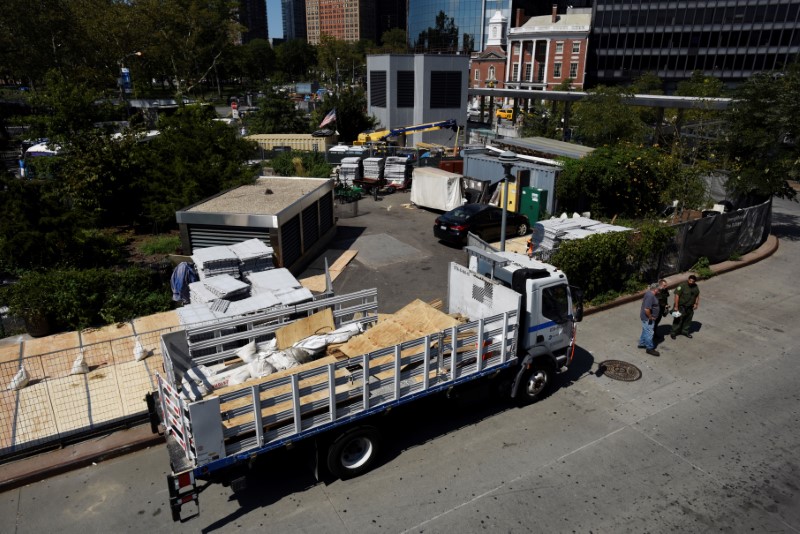Image: Metropolitan Transit Authority bring plywood and sandbags to cover subway grates and entrances as New York City prepares for potential flooding from post-tropical storm Hermine along the east coast of the United States, September 4, 2016. REUTERS/Mark Kauzlarich
![]()
By Sebastien Malo
NEW YORK (Thomson Reuters Foundation) – Hurricanes could start flooding New York City’s coastline as often as every 20 years due to the effects of climate change on sea-level rise and hurricane activity, scientists said on Monday.
Water could surge some 9 feet (2.8 meters) in hurricanes occurring anywhere from three to 17 times more often than today, they said.
“That’s approximately – worst case scenario – once every 20 years,” said Benjamin Horton, part of a team of U.S. scientists who published their findings in a study.
The projections act as a reminder of the human cost of climate change, said Horton, in particular after Hurricane Matthew ravaged the southeastern United States over the weekend.
“The inundations from hurricanes will affect where we live, it will affect how we work, it will cause problems with the ecosystem,” said Horton, a professor of sea level research at New Jersey-based Rutgers University.
“It’s very bleak.”
The study published in the Proceedings of the National Academy of Sciences aimed to measure how frequently floods like those produced by Hurricane Sandy in the U.S. states of New York and New Jersey could occur until 2100.
Sandy devastated the northeastern U.S. coast in 2012, including coastal areas of New York City, killing more than 120 people and causing some $70 billion of property damage.
Under a scenario in which the climate remained as it is today, Sandy-like hurricanes would occur about once every 400 years, Horton said.
Shielding humans from more frequent flooding would require an enormous undertaking to protect coastal areas and New York, a city of 8.5 million people, he said.
“Something like that periodically hitting the coastline, it would result in incredible engineering projects, up and down the U.S. seaboard, to protect society,” Horton told the Thomson Reuters Foundation in a phone interview.
The projections highlight the importance of slashing greenhouse gas emissions that cause climate change, he said.
The study is based on a combination of historical data and computer model projections.
It was the first to make projections by accounting for how climate change could contribute to rising seas and hurricane activity, said Ning Lin, the study’s lead author and an assistant professor at Princeton University in New Jersey.
A new global agreement to tackle climate change will take effect on Nov. 4 after the accord, known as the Paris Agreement, crossed an important threshold for support last week.
(Reporting by Sebastien Malo, Editing by Ros Russell; Please credit the Thomson Reuters Foundation, the charitable arm of Thomson Reuters, that covers humanitarian news, women’s rights, trafficking, property rights and climate change. Visit http://news.trust.org)
Copyright 2015 Thomson Reuters. Click for Restrictions.


